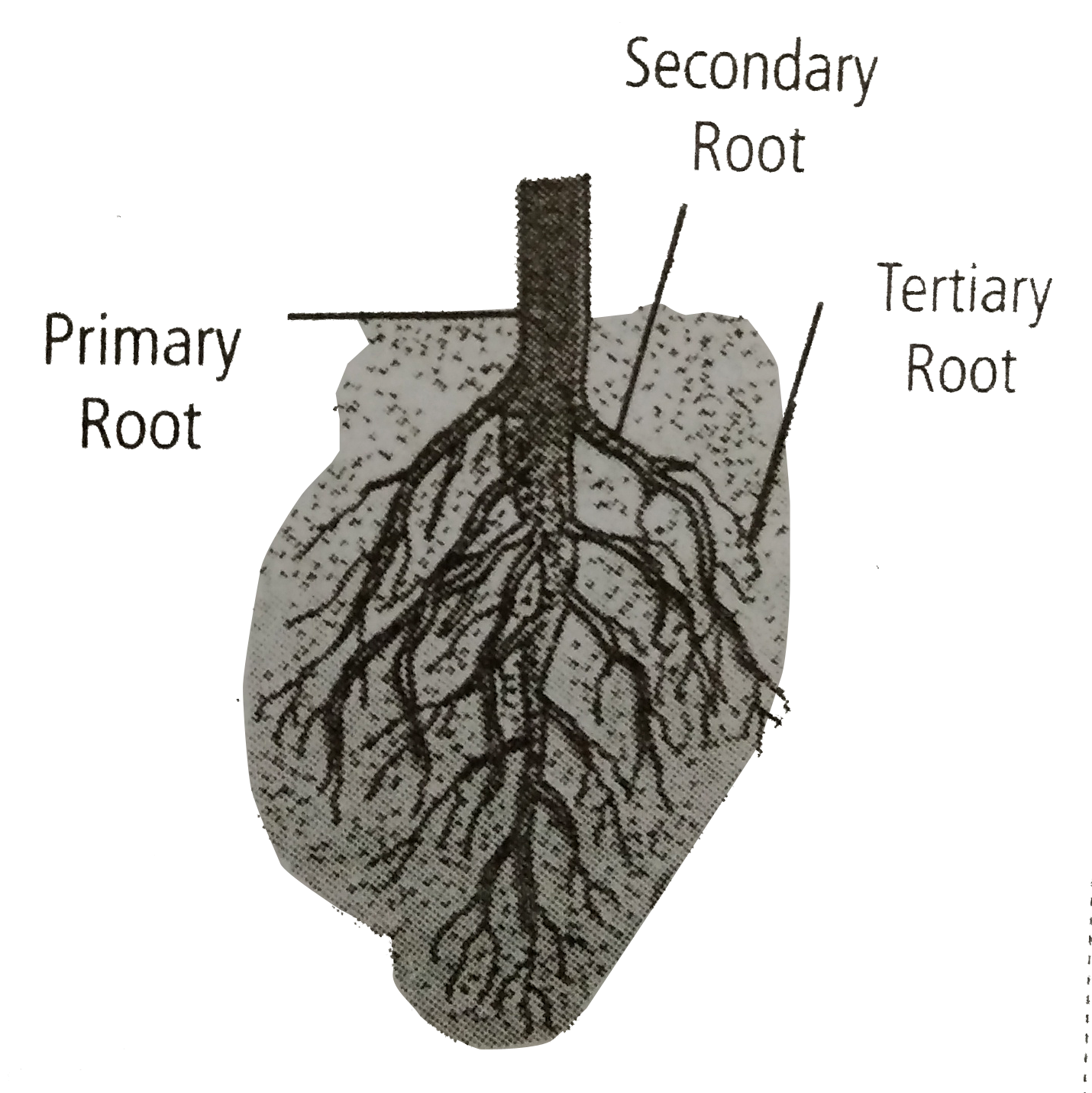Match column I with column II and select the correct option from given codes.
Column IColumn IIA. Marginal(i) Sunflower, marigoldB. parietal(ii) PeaC Axile(iii) Mustard,ArgemoneD. Free central(iv) Hibiscus,ArgemoneE. Basal(v) Dianthus, Primorse
A-(ii),B-(iii),C-(iv),D-(v),E-(i)
A-(i),B-(iii),C-(ii),D-(v),E-(iv)
A-(i),B-(ii),C-(iii),D-(iv),E-(v)
A-(iii),B-(ii),C-(iv),D-(v),E-(i)
The correct Answer is:A
To solve the problem of matching Column I with Column II based on the types of placentation, we will go through each type of placentation and its corresponding examples step by step.
1. Identify Marginal Placentation:
- Definition: In marginal placentation, the ovules develop along a ridge on the ventral suture of the ovary.
- Example: This type of placentation is found in Pea.
- Match: A. Marginal → (ii) Pea
2. Identify Parietal Placentation:
- Definition: In parietal placentation, the ovules develop on the inner walls of the ovary.
- Example: This type is found in Mustard and Argemone.
- Match: B. Parietal → (iii) Mustard, Argemone
3. Identify Axile Placentation:
- Definition: In axile placentation, the ovules are attached to a central axis within the ovary.
- Example: This type is found in Hibiscus and Tomato.
- Match: C. Axile → (iv) Hibiscus, Argemone
4. Identify Free Central Placentation:
- Definition: In free central placentation, the ovules develop on a central axis, and the septa are absent.
- Example: This type is found in Dianthus and Primrose.
- Match: D. Free Central → (v) Dianthus, Primrose
5. Identify Basal Placentation:
- Definition: In basal placentation, the ovule is attached at the base of the ovary.
- Example: This type is found in Sunflower and Marigold.
- Match: E. Basal → (i) Sunflower, Marigold
Summary of Matches:
- A. Marginal → (ii) Pea
- B. Parietal → (iii) Mustard, Argemone
- C. Axile → (iv) Hibiscus
- D. Free Central → (v) Dianthus, Primrose
- E. Basal → (i) Sunflower, Marigold
Final Answer:
The correct option based on the matches is:
- A → (ii)
- B → (iii)
- C → (iv)
- D → (v)
- E → (i)
- Definition: In marginal placentation, the ovules develop along a ridge on the ventral suture of the ovary.
- Example: This type of placentation is found in Pea.
- Match: A. Marginal → (ii) Pea
- Definition: In parietal placentation, the ovules develop on the inner walls of the ovary.
- Example: This type is found in Mustard and Argemone.
- Match: B. Parietal → (iii) Mustard, Argemone
- Definition: In axile placentation, the ovules are attached to a central axis within the ovary.
- Example: This type is found in Hibiscus and Tomato.
- Match: C. Axile → (iv) Hibiscus, Argemone
- Definition: In free central placentation, the ovules develop on a central axis, and the septa are absent.
- Example: This type is found in Dianthus and Primrose.
- Match: D. Free Central → (v) Dianthus, Primrose
- Definition: In basal placentation, the ovule is attached at the base of the ovary.
- Example: This type is found in Sunflower and Marigold.
- Match: E. Basal → (i) Sunflower, Marigold
- A. Marginal → (ii) Pea
- B. Parietal → (iii) Mustard, Argemone
- C. Axile → (iv) Hibiscus
- D. Free Central → (v) Dianthus, Primrose
- E. Basal → (i) Sunflower, Marigold
The correct option based on the matches is:
- A → (ii)
- B → (iii)
- C → (iv)
- D → (v)
- E → (i)
Topper's Solved these Questions
- MORPHOLOGY OF FLOWERING PLANTSBOOK - NCERT FINGERTPS ENGLISHCHAPTER - MORPHOLOGY OF FLOWERING PLANTSEXERCISE - Morphology Of Flowering Plants
135 Videos
- MINERAL NUTRITIONBOOK - NCERT FINGERTPS ENGLISHCHAPTER - MINERAL NUTRITIONEXERCISE - Mineral Nutrition
130 Videos
- NEURAL CONTROL AND COORDINATIONBOOK - NCERT FINGERTPS ENGLISHCHAPTER - NEURAL CONTROL AND COORDINATIONEXERCISE - All Questions
144 Videos
Similar Questions
Refer to the given figure and select the incorrect statements regarding this.

View SolutionThe technique of hydroponics was first demonstated by
View SolutionIn which animal, nerve cell is present but brain is absent ?
View SolutionMatch column I with column II and select the correct option from the given codes.
ColumnIColumnIIA.Ovary(i)Groundnut,mustardB.Ovule(ii)Guava,organe,mangoC.Wall of ovary(iii)PericarpD.Fleshy furits(iv)SeedE.Dry fruits(v)Fruit
View SolutionMatch the columns and find correct options {:(,"Column I ",,"ColumnII"),(a,"Basal","p","Dianthus"),(b,"Free central","q","Pea"),(c,"parietal","r","Lomen"),(d,"Axile","s","Marigold"),(e,"Marginal","t","Argemone"):}
View SolutionMatch the columns and find the correct option I II (a)Marginal Placebtation(i)Sunflower(b)Axile placentation(ii)Mustard(c)Parietal placentation(iii)Lemon(d)Basal placentation(iv)Pea
View SolutionMatch the columns and find the correct option III(a)Marginal placentation(i)Sunflower(b)Axile placentation(ii)Musdard(c)Parietal placentation(iii)Lemon(c)Basal placentation(iii)Pea
View SolutionWhich of the following is not correct?
1. Axile-Primrose
2. Parietal-Mustard,Argemone
3. ree central-Dianthus
4.Basal-sunflower,Marigold
View SolutionRead the following matches regarding the placentation (i) Primrose - Free central (ii) Pea - Marginal (iii) Marigold - Basal (iv) Mustard - Axile Which of these are correct ?
View SolutionRead the following matches regarding the placentation : (i) Dianthus - Free central (ii) Cannabis - Marginal (iii) Sunflower - Basal (iv) Cucurbita - Axile Which of these are correct ?
View SolutionMatch the placental type (Column I) with their examples (Column II) {:("Column I", "Column II"),("A. Basal", "(i) Mustard"),("B. Axile", "(ii) China rose"),("C. Parietal", "(iii) Dianthus"),("D. Free central", "(iv) Sunflower"):} Choose the correct answer from the following options:
View SolutionMatch column I with column II and select the correct option from given codes.
Column IColumn IIA. Marginal(i) Sunflower, marigoldB. parietal(ii) PeaC Axile(iii) Mustard,ArgemoneD. Free central(iv) Hibiscus,ArgemoneE. Basal(v) Dianthus, Primorse
View SolutionMatch column I with column II and select the correct option from the given codes.
ColumnIColumnIIA.Ovary(i)Groundnut,mustardB.Ovule(ii)Guava,organe,mangoC.Wall of ovary(iii)PericarpD.Fleshy furits(iv)SeedE.Dry fruits(v)Fruit
View SolutionRead the following matches regarding the placentation (i) Primrose - Free central (ii) Pea - Marginal (iii) Marigold - Basal (iv) Mustard - Axile Which of these are correct ?
View SolutionMatch the placental type (Column I) with their examples (Column II) {:("Column I", "Column II"),("A. Basal", "(i) Mustard"),("B. Axile", "(ii) China rose"),("C. Parietal", "(iii) Dianthus"),("D. Free central", "(iv) Sunflower"):} Choose the correct answer from the following options:
View SolutionRead the following matches regarding the placentation (i) Primrose - Free central (ii) Pea - Marginal (iii) Marigold - Basal (iv) Mustard - Axile Which of these are correct ?
View Solution

